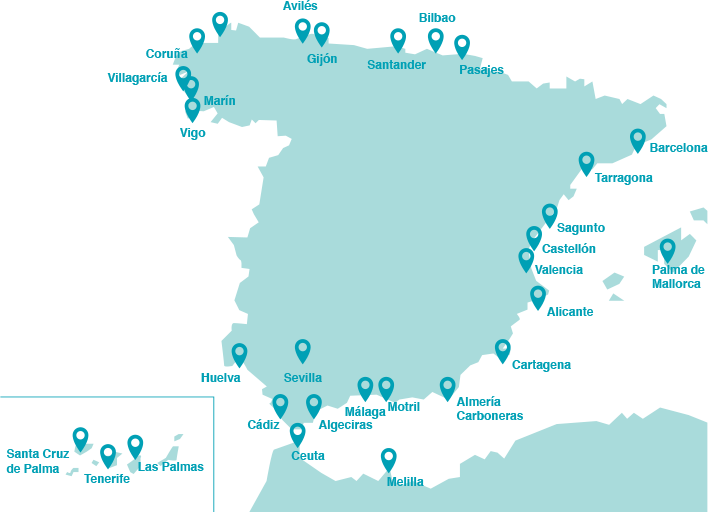
![]()
EVOLUTION OF FREIGHT TRAFFIC IN SPAIN
The evolution of freight traffic from 1992 until the present, and how the decline in traffic, overcapacity, and high costs are damaging the sector.
![]()
THE PORT SECTOR’S STRUCTURAL PROBLEMS
The decline in traffic, the overcapacity of Spanish ports, and the high costs of labour and fees are the main problems of the Spanish port sector.
![]()
CHALLENGES AND
DIFFICULTIES OF THE SECTOR
Main challenges and difficulties to assure profitability for port investors and the future of the sector. Ten proposals from PIPE to reactivate the Spanish ports.
WHAT IS THE
PLATAFORMA IPE?
PIPE is the Platform of Investors in Spanish Ports, created in 2013 with the aim of becoming the opinion forum within the Spanish port sector, proposing changes and improvements to boost competitiveness, development, and sustainability in this important sector within the Spanish economy.
The platform is composed of the most important business groups that have invested in the Spanish port system, and whose premises are found in major Spanish ports. The members of PIPE are found in all the Port Authorities, and are the following:

All of these companies have port concessions for stevedoring operations in more than 33 Spanish ports.
PIPE’s presence in the ports of Spain
Source:
Websites of PIPE’s members

WHO’S WHO IN A SPANISH PORT
The port is a complex structure of stakeholders and companies that provide services upon which the competitiveness and services provided at a port depend.

The ship operator or shipbuilder operates a vessel at its own risk, regardless of whether it owns the ship or not. The ship operator has several partners who are: the captain, the crew (mate, boatswain, engineer, and purser), maritime pilot, tug, berthing master, and stevedore.

![]()


The berthing master is the operator in charge of berthing, which consists in attaching the vessel’s towlines or ropes to the bollards of the docks.


